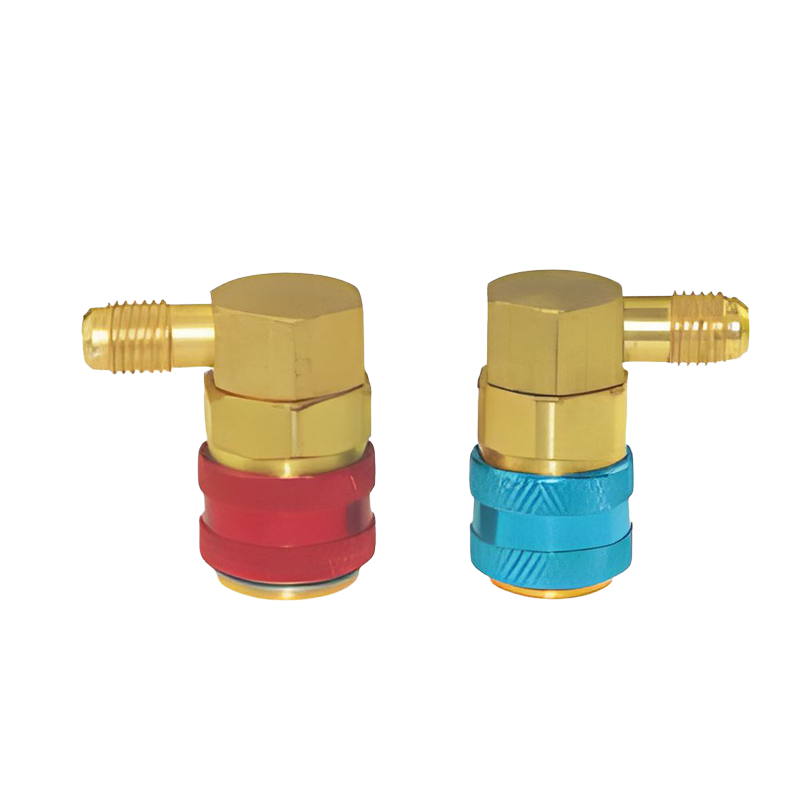Jul 11, 2025
Refrigerants have long been essential for cooling and refrigeration systems, from household air conditioners to large-scale industrial freezers. Over the years, the accessories used to manage, control, and optimize refrigerants have evolved significantly. Refrigerant accessories factory, which include components like valves, gauges, filters, hoses, and regulators, have become more advanced to meet modern demands for energy efficiency, safety, and sustainability.

The history of refrigeration dates back to the 19th century, when mechanical refrigeration systems were developed. Early refrigeration systems used simple, manually operated valves and basic components that allowed refrigerants to circulate through the system. Refrigerants such as ammonia and ether were commonly used, and the accessories at the time were relatively rudimentary, serving basic functions such as controlling refrigerant flow and maintaining pressure.
In these early systems, the accessories were often made from basic metals like brass or copper, materials that were durable enough to handle the demands of refrigeration but lacked the advanced coatings or corrosion-resistant properties that would become standard in later years. For example, expansion valves were simple mechanical devices that controlled the flow of refrigerant into the evaporator, but lacked the precision and automated features of modern systems.
The focus at the time was primarily on functionality rather than energy efficiency or environmental concerns. Refrigeration was considered an emerging technology, and while it was invaluable for food preservation and industrial cooling, the systems were far from. Leaks, inefficiency, and the lack of precise control were common challenges.
By the mid-20th century, refrigeration technology had advanced significantly. The widespread adoption of air conditioning and refrigeration in commercial and residential settings spurred innovations in refrigerant accessories. During this time, new refrigerants like Freon (R-12) began to dominate, and the cooling industry became more standardized.
One of the significant innovations during this period was the introduction of pressure regulators and gauges. These tools allowed technicians to monitor the pressure levels within refrigeration systems more accurately. Gauges became essential for diagnosing system performance, while regulators helped control the pressure of the refrigerant to maintain efficient operation.
In addition, the development of more durable and corrosion-resistant materials led to improvements in hoses, connectors, and valves. Copper and brass were still widely used, but coatings and better sealing techniques helped reduce wear and tear, extending the lifespan of refrigeration systems. This period also saw the development of the "TXV" (Thermostatic Expansion Valve), a device designed to improve the efficiency of refrigerant flow and prevent the system from overloading.
With the rise of modern refrigeration systems, the industry began to see more regulation regarding refrigerant types and system efficiency. In response to growing environmental concerns about ozone depletion, global treaties like the Montreal Protocol, signed in 1987, called for the gradual phase-out of CFCs (chlorofluorocarbons) and other harmful refrigerants. This marked the beginning of a new era for refrigerant accessories, one focused on safety, sustainability, and efficiency.
As concerns over ozone depletion and global warming grew, the refrigeration industry was forced to reevaluate the types of refrigerants used and the accessories that supported them. The shift toward more environmentally friendly refrigerants, such as hydrofluorocarbons (HFCs) and hydrofluoroolefins (HFOs), required significant changes in both refrigerant compositions and the materials used for system accessories.
In response, refrigerant accessories underwent further evolution. Valves, compressors, and hoses were redesigned to accommodate the new refrigerant types, which often required different pressures and temperatures for performance. The use of HFCs like R-134a became common, and accessories were upgraded to ensure they were compatible with these new substances.
One of the significant changes during this period was the development of more precise diagnostic tools. Digital manifold gauges, for example, emerged as an improvement over traditional analog gauges. These digital tools provided more accurate readings and allowed for quicker troubleshooting of issues within refrigeration systems. Technicians could now measure pressures, temperatures, and superheats with greater precision, making it easier to optimize system performance and identify leaks.